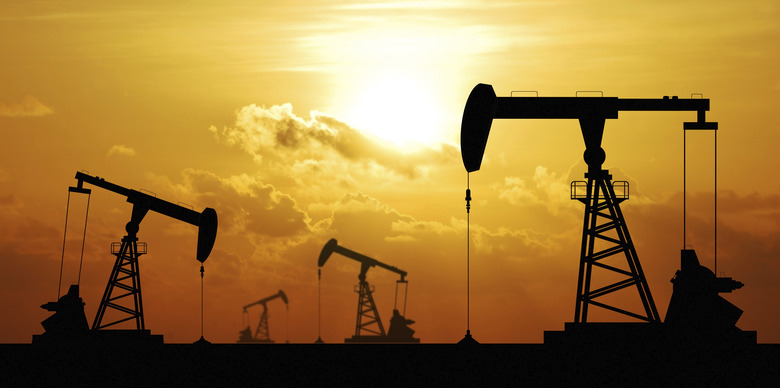How Do Oil Field Pumps Work?
For better or worse, the economy of the developed world runs on oil. Finding, producing and refining crude petroleum into usable products is big business. For most people, the most visible feature of the search for petroleum is the oil field pumps, or pumpjacks — the bobbing metal constructs that dot the surface in areas where petroleum is produced. Because of their characteristic shape and motion, pumpjacks, also called beam pumps, are often given fanciful names such as "lonely birds" and "nodding donkeys." Whatever name you call them, such pumps are critical to crude oil production.
Where Is the Oil?
Where Is the Oil?
There is a romantic notion that oil is produced by sticking a faucet in an underground river or lake, but this is far more simplistic than the reality of oil production. In the real world, oil fills tiny interconnected spaces in the buried rock, spaces called "pores." To produce oil, an exploration company must find a reservoir, a volume of rock with sufficient pores containing oil. Many potential reservoirs contain limited amounts of oil or only hold water. This rock volume must also be surrounded by rocks that lack such interconnected pores, which "trap" the oil in its reservoir.
Why a Pump?
Why a Pump?
Another romantic notion of the oil industry is the "gusher," a sort of oil volcano that sprays black gold far and wide from the derrick. This is a bad idea for several reasons: economically speaking, oil that's sprayed across the landscape can't be collected and sold. Far more important, however, a gusher, or "blowout," represents flammable substances flowing under extreme pressure, a highly dangerous situation.
Most reservoirs are not under sufficient pressure for the oil, water and natural gas they contain to reach the surface without some help. Since the reservoirs are thousands of meters (thousands or tens of thousands of feet) underground, simple suction pumps do not suffice to bring the fluids to the surface. Instead, crude oil producers use a system of artificial lift.
Surface Appearance of the Pump
Surface Appearance of the Pump
The visible parts of an oil field pump can range in size from small enough to fit in the bed of a pickup truck to structures the size of a house. As a general rule, the larger the pumpjack, the deeper the reservoir. The typical pump comprises an A-shaped frame topped by a long bar or beam. One end of the beam is connected to a motor. The turning motor operates a linkage that causes the beam to work back and forth like a seesaw. At the other end of the beam, the pipe that runs to the bottom of the well is connected to a large, rounded metal triangle. The triangle's horse head-like shape bobs up and down as the pump operates, driving the pumping action of the assembly at the bottom of the well.
Downhole Parts of the Pump
Downhole Parts of the Pump
The "pumping" parts of a pumpjack are out of sight. A string of hollow pipes, called sucker rods, runs from the horse head on the pumpjack to the reservoir at the bottom of the well. The hidden parts of the sucker rod system are two simple chambers that seal with ball valves. The valve on a plunger, attached to the end of the sucker rod string, opens as the rod system moves downward. This allows oil to fill the plunger and forces the fluids in the pipe above it upward. Once the plunger reaches the bottom of the up-and-down stroke, the ball valve closes, holding the fluids in place. Meanwhile, the ball on the fixed standing valve at the bottom of the well moves out of the way to open while the plunger rises. This allows oil to collect above the standing valve. When the plunger descends again, this second ball valve closes, trapping a pool of oil where it can enter the plunger and eventually make its way up the sucker rod string to the surface.
Cite This Article
MLA
O'Donahue, Kelvin. "How Do Oil Field Pumps Work?" sciencing.com, https://www.sciencing.com/do-oil-field-pumps-work-5557828/. 13 March 2018.
APA
O'Donahue, Kelvin. (2018, March 13). How Do Oil Field Pumps Work?. sciencing.com. Retrieved from https://www.sciencing.com/do-oil-field-pumps-work-5557828/
Chicago
O'Donahue, Kelvin. How Do Oil Field Pumps Work? last modified March 24, 2022. https://www.sciencing.com/do-oil-field-pumps-work-5557828/
